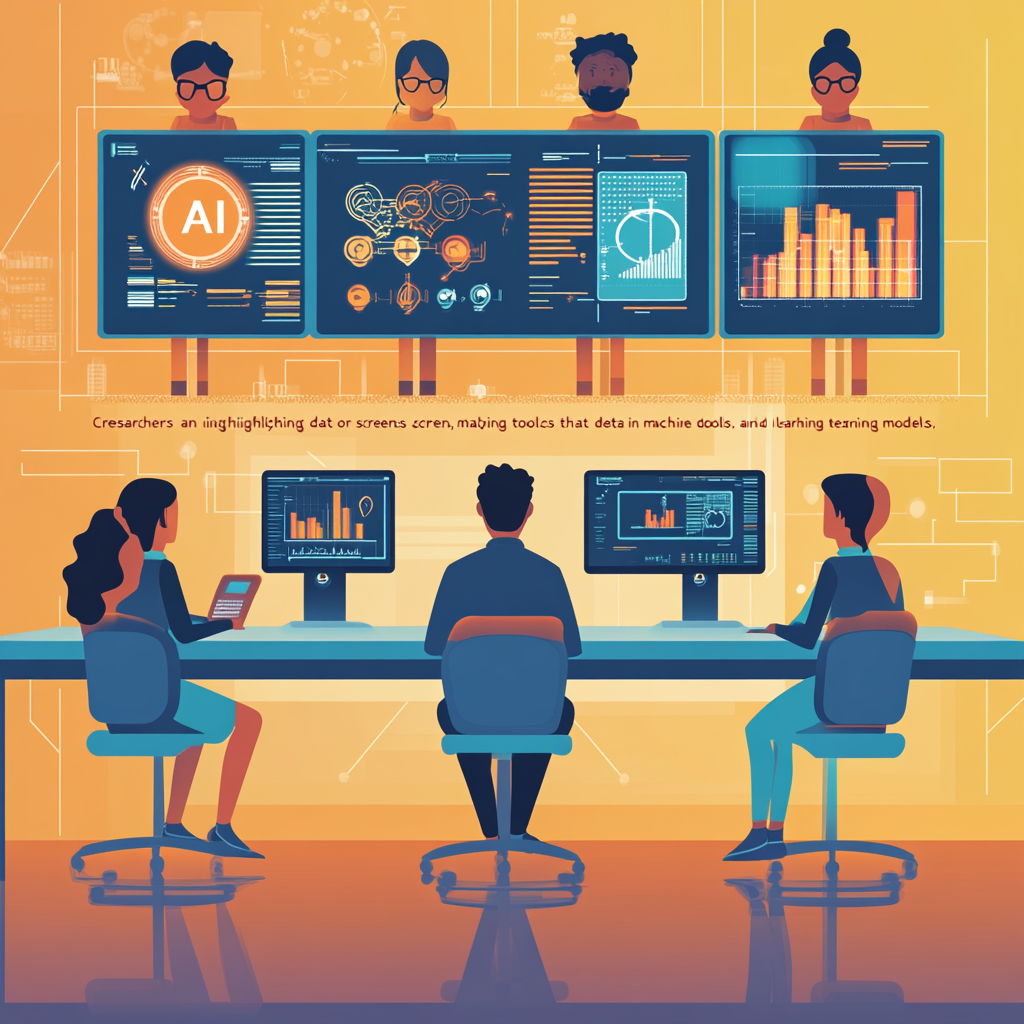
Unbiased AI: Tackling Model Discrimination
AI Bias Detection Tools: The New Guardians of Fairness in the Digital Age
In the wild and exciting world of artificial intelligence, where bits and bytes dance like flamboyant peacocks, there’s a thorny issue lurking in the shadows: bias. Not the charming kind you see on a weekend with a bottle of wine among friends, but the insidious sort that, despite the sophistication of our algorithms, can trip us up at the most inopportune times. Much like fashion trends that refuse to die, biases in AI models can perpetuate and even magnify historical inequities stamped into the data they feast on. It's a serious conundrum, but thankfully, the brainy folks in lab coats are not sitting idle. They are feverishly developing AI bias detection tools, breathing life into a new frontier aiming to root out this discrimination in our digital companions.
The Bias Beast: An Uninvited Guest at the AI Banquet
Let’s get straight to the meat of the matter. How does bias sneak into our precious AI models? The answer lies in the notorious datasets used for training these models, which can often be drenched in historical biases and outdated discriminatory practices. Imagine a scenario where an AI system is trained using data from an enterprise that never saw a woman in a certain role. What happens next is systemic: the AI learns this behavior and, when tasked with making recommendations, defaults to the only gender it's been taught to favor. The result? A recommendation list that reads like a boys' club. We’re talking about deep-rooted issues that can affect hiring strategies, loan approvals, and even crime predictions! Picture it: our well-meaning AI is basing decisions on an obsolete script we never intended it to follow.
How Do AI Bias Detection Tools Save the Day?
Now, let’s talk tools. The unsung heroes of the AI world are the bias detection systems, turbocharged by the power of machine learning. These models dig through mountains of data, searching for patterns that blink a warning: “Hey, something doesn’t smell right here!” Using supervised models, these tools are taught to spot specific biases through labeled data, while unsupervised models go on exploratory missions to sniff out hidden biases lurking in unlabeled datasets. This two-headed approach sharpens our ability to detect biases, making the results more reliable and ethical.
Enter the world of Natural Language Processing (NLP), the Robin to our Batman in the fight against bias. With a flair for the linguistic arts, NLP examines text and speech to uncover subtle biases that might otherwise slip through the cracks. It can analyze all sorts of content—from product reviews to social media rants—revealing the not-so-subtle prejudices hidden beneath the surface. So go ahead, let NLP crack the code of biased language; it’s like putting on a pair of glasses that allow us to see the world as it truly is, warts and all.
Fresh Off the School of Hard Knocks: Recent Breakthroughs in Bias Detection
Let’s zoom in on some fascinating developments, shall we? One of the standout stars on the scene is LangBiTe, crafted by brilliant minds at Universitat Oberta de Catalunya (UOC) and the University of Luxembourg. This nifty open-source program promises to ensure that generative AI models are all about that fairness vibe. The multilingual feature is a cherry on top, allowing it to assess models in various languages. Oh, and it doesn’t stop at texts; it casts a wide net to tackle biases in images generated by tools like Stable Diffusion and DALL·E. This is crucial, as we know that biases don’t play favorites—they can seep into all kinds of content and contexts.
Then there's the causality-based bias detection tool birthed from collaboration at Penn State and Columbia University. This brainy tool flips the script and focuses on causality. Instead of just looking at outcomes, it digs deeper to see if societal constructs like gender and pay are flirting with each other under the dinner table. It’s a powerful approach that puts the spotlight on whether a woman would earn a more appealing salary if she had a male name attached to her resume. Spoiler alert: often the answer is a resounding ‘yes,’ highlighting pervasive discrimination and cluing us in on what we need to fix.
And don’t you dare forget the Large Language Models (LLMs). Recent research has unveiled their capacity to identify and score biases across a variety of personal attributes in generated candidate interview reports. Imagine being able to score the biases tied to gender, race, socioeconomic status, and more in real-time! It’s like getting a scorecard for fairness—how cool is that?
Legal Jargon Meets Ethical Vigilance
As we gallop into uncharted territories, let’s not overlook the legal and ethical implications of bias detection in AI. Enter the concept of disparate impact analysis, a legal doctrine aiming to slice through the fuzz. This approach helps assess whether specific demographic groups are getting a raw deal from AI systems designed to make decisions regarding their lives. It shifts the weights in favor of fairness, nudging AI developers to build systems that comply with non-discrimination laws.
In a world where every click, like, and search can feed the hungry algorithms, ensuring our tech doesn't inherit the flawed values of our past is paramount. We find ourselves standing at a precipice, where the tools of detection can either be our salvation or our downfall.
The Road Ahead: A World of Fair AI Awaits
To wrap this saga up, the emergence of AI bias detection tools is nothing short of revolutionary. With formidable allies like machine learning models, NLP, and cutting-edge causality frameworks, we have powerful means at our disposal to spotlight and retroactively address the biases that have wormed their way into our AI systems. As our reliance on AI systems snowballs across every corner of our lives—whether it be in hiring, financing, or even our day-to-day interactions—the significance of these tools can’t be overstated.
So, are we going to sit back and let AI operate on outdated biases? By no means. It’s time for us to roll up our sleeves and engage with this technology, ensuring that fairness isn’t just an afterthought but an integral part of our digital landscape.
We can only hope that with consistent monitoring, conscious building, and relentless pursuit of fairness, we can foster a tech ecosystem that reflects the best of humanity.
Want to stay up to date with the latest news on neural networks and automation? Subscribe to our Telegram channel: @channel_neirotoken.
Stay informed, and let's create a more equitable digital future together!

